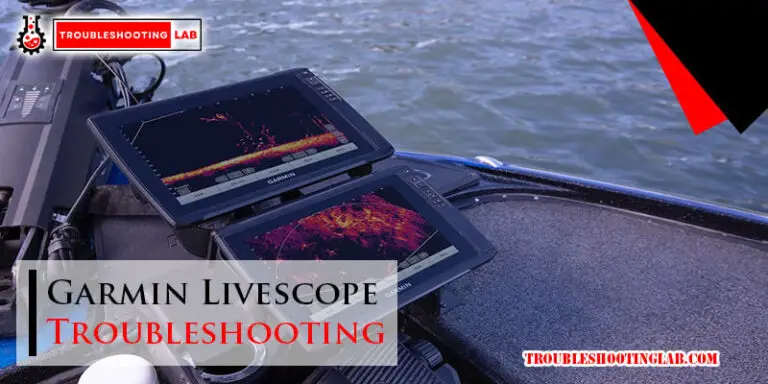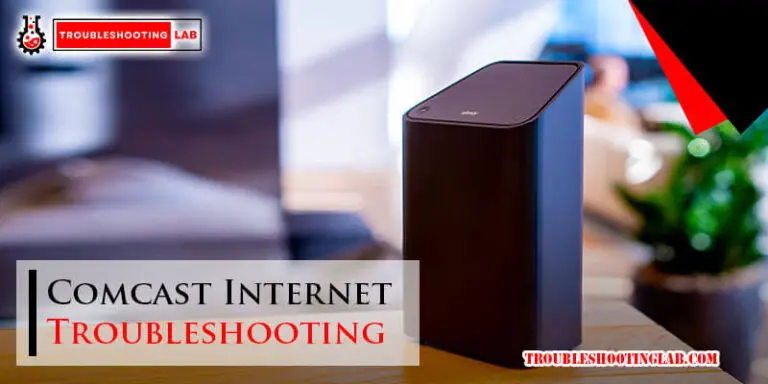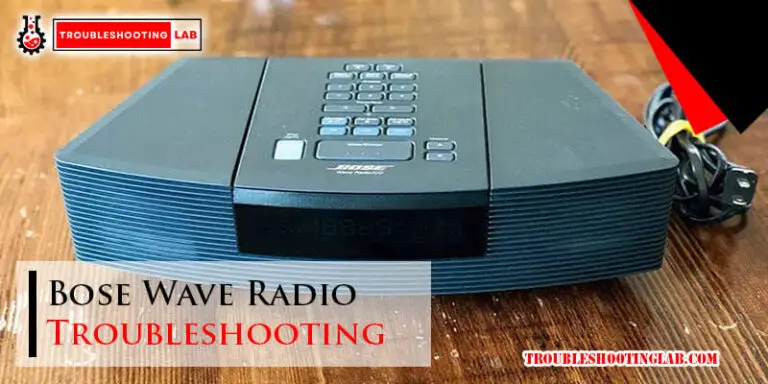Oculus Rift Troubleshooting: Ultimate Guide to Fix Common Issues
Virtual reality can be thrilling, but tech issues can spoil the fun. Oculus Rift users often face common problems that need quick solutions.
Oculus Rift offers an immersive experience, but like any tech, it has hiccups. If your VR adventure gets interrupted, don’t worry. Troubleshooting can fix many issues. This guide dives into common problems and how to solve them. Whether it’s a display error, connection problem, or software glitch, we’ll help you get back to your VR world.
Understanding these fixes ensures a smoother experience. Keep reading to learn easy solutions for your Oculus Rift. Enjoy uninterrupted VR time with these handy tips!

Credit: 360rumors.com
Introduction To Oculus Rift
The Oculus Rift is a popular virtual reality headset. It offers immersive experiences for gaming and other applications. Many users enjoy its advanced features and seamless performance. Sometimes, users might encounter issues. This blog helps troubleshoot common problems. Let’s start with an introduction to the Oculus Rift.
Brief History
The Oculus Rift was first introduced in 2012. Palmer Luckey, the founder of Oculus VR, created it. A Kickstarter campaign helped fund its development. In 2014, Facebook acquired Oculus VR. The first consumer version was released in 2016. Since then, it has evolved with new models and features.
Key Features
The Oculus Rift boasts several standout features. It offers high-resolution displays for a clear view. The headset has a 110-degree field of view. This provides a wide and immersive experience. Built-in headphones deliver 3D audio for a realistic soundscape. It uses sensors to track head movements. This ensures precise and responsive interactions. The Rift also supports various controllers. These enhance the VR experience with intuitive controls.
Common Setup Issues
Setting up the Oculus Rift can be tricky for some users. Many face common issues that prevent a smooth setup. This section will guide you through solving these common problems. Understanding hardware requirements and software installation problems can help you enjoy your VR experience faster.
Hardware Requirements
First, ensure your PC meets the hardware requirements for the Oculus Rift. The device needs a powerful computer. Check if your PC has a compatible CPU and GPU. At least an Intel i5-4590 or AMD Ryzen 5 1500X is needed. The graphics card should be NVIDIA GTX 1060 or AMD Radeon RX 480.
Also, check the RAM. The Oculus Rift needs at least 8GB of RAM. Make sure your PC has enough USB ports. You need three USB 3.0 ports and one USB 2.0 port. If your hardware does not meet these requirements, the Oculus Rift may not work properly.
Software Installation Problems
Another common issue is software installation. Ensure you have the Oculus software installed correctly. Download the latest version from the official Oculus website. Sometimes, antivirus software can block the installation. Temporarily disable your antivirus and try again.
Update your graphics drivers before installing the Oculus software. Outdated drivers can cause installation issues. You can download the latest drivers from the GPU manufacturer’s website. After updating, restart your PC and try installing the software again.
Sometimes, the software may not detect the Oculus Rift. Ensure all cables are connected properly. Check the HDMI and USB connections. Restart your PC and the Oculus Rift. This can help the software detect the device.
Display Problems
The Oculus Rift is a popular VR headset. But sometimes, users face display problems. These issues can be frustrating. Luckily, many display problems have simple fixes. Let’s explore some common display problems and how to solve them.
Black Screen
A black screen can be alarming. First, check the headset connection. Ensure all cables are securely plugged in. Next, restart your computer. Sometimes, a simple restart resolves the issue. If the problem persists, update your graphics drivers. Outdated drivers can cause display issues. Also, check the Oculus software. Make sure it’s updated to the latest version. If none of these steps work, try a different USB port. Some ports may not provide enough power.
Blurry Image
Blurry images can ruin the VR experience. Start by adjusting the headset fit. A loose headset can cause blurriness. Next, clean the lenses. Dust and smudges can affect clarity. Use a microfiber cloth for cleaning. Adjust the interpupillary distance (IPD) setting. This setting matches the distance between your eyes. Incorrect IPD can cause blur. Finally, check the resolution settings. Lower resolutions can result in blurry images. Set the resolution to the recommended level for the Oculus Rift.
Tracking Issues
Experiencing tracking issues with your Oculus Rift can be frustrating. Tracking problems can disrupt your immersive VR experience. This section will guide you through solving common tracking issues. We’ll focus on Sensor Setup and Controller Tracking.
Sensor Setup
Proper sensor setup is crucial. Follow these steps to optimize your sensors:
- Place sensors at least 3 feet apart.
- Ensure sensors have a clear line of sight.
- Position sensors at eye level.
- Adjust sensor angles to cover your play area.
Check your cables. Loose or disconnected cables can cause issues. Use the Oculus software to calibrate your sensors. Calibration ensures accurate tracking.
Controller Tracking
Controller tracking issues can disrupt your gameplay. Here are steps to improve controller tracking:
- Ensure your controllers have fresh batteries.
- Restart your headset and controllers.
- Check for firmware updates.
- Re-pair your controllers using the Oculus app.
If issues persist, check for interference. Remove objects that may block the signal. This includes mirrors and shiny surfaces. Keep your play area well-lit. Light helps sensors track movement better.
For consistent tracking, maintain a clear play space. Ensure that you have enough room to move freely. Avoid standing too close to the sensors. This can disrupt tracking and reduce accuracy.
Connectivity Problems
Experiencing connectivity problems with your Oculus Rift can be frustrating. These issues can hinder your VR experience. This section will help you troubleshoot common connectivity problems. We will focus on USB and HDMI connections.
Usb Connection
Check if your USB ports are working properly. Plug another device into the same port to test it. Sometimes, outdated drivers can cause problems. Make sure to update your USB drivers. Use USB 3.0 ports for better performance. Avoid using USB hubs. They can interfere with the connection. If the issue persists, try a different USB port.
Hdmi Connection
Ensure your HDMI cable is securely connected. Loose connections can disrupt the signal. Check if the cable is damaged. Replace it if necessary. Make sure your graphics card drivers are up to date. Outdated drivers can cause display issues. Use the HDMI port on your graphics card, not the motherboard. This ensures better performance. If you have multiple monitors, disconnect them. Try using only the Oculus Rift.

Credit: www.youtube.com
Audio Issues
Experiencing audio problems with your Oculus Rift can be frustrating. Whether there’s no sound or the sound is distorted, these issues can hamper your VR experience. Let’s dive into common audio issues and how to fix them.
No Sound
If there’s no sound coming from your Oculus Rift, it could be due to several reasons. Follow these steps to troubleshoot:
- Ensure your headphones are properly connected to the headset.
- Check if your computer’s audio settings are configured to use the Rift headset.
- Go to Settings > Devices in the Oculus app and make sure the audio output is set to the Rift.
- Update your audio drivers from the Device Manager on your computer.
- Restart your Oculus software and your computer.
Sometimes, the simplest solutions can solve the problem. If the issue persists, try a different set of headphones to rule out hardware issues.
Sound Distortion
Sound distortion can ruin the immersive experience. Here are some steps to resolve this:
- Check if your headset’s connectors are clean and free of debris.
- Reduce the volume to see if the distortion decreases.
- Disable any audio enhancements in your computer’s audio settings.
- Ensure your Oculus software is up-to-date.
- Unplug and replug your headset into your computer.
If you still experience distortion, try using different headphones or speakers. This can help identify if the issue is with the Rift or the audio device.
Addressing these audio issues can enhance your Oculus Rift experience. Enjoy clear, immersive sound in your VR adventures.
Performance Troubles
Facing performance issues with your Oculus Rift can be frustrating. These troubles can disrupt your immersive experience. Let’s explore common performance problems and how to fix them.
Lagging
Lagging can ruin your VR experience. It’s when there’s a noticeable delay between your actions and what you see.
Here are some common causes of lagging:
- Outdated drivers
- Running too many background applications
- Weak internet connection
Steps to fix lagging:
- Update your graphics drivers.
- Close unnecessary background applications.
- Ensure you have a strong and stable internet connection.
Make sure your PC meets the minimum requirements for Oculus Rift. Check the official Oculus website for the detailed specifications.
Frame Rate Drops
Frame rate drops can cause a choppy and unpleasant VR experience. It occurs when the number of frames per second (FPS) decreases suddenly.
Common reasons for frame rate drops:
- High graphics settings
- Overheating hardware
- Insufficient RAM
How to improve frame rate:
- Lower the graphics settings in the Oculus app.
- Ensure your PC is well-ventilated to prevent overheating.
- Consider upgrading your RAM if it is below 8GB.
Consistently monitor your system’s performance while using the Oculus Rift. Use tools like Task Manager to keep an eye on resource usage.
Software Glitches
Experiencing software glitches on your Oculus Rift can be frustrating. These issues often disrupt your gaming or virtual reality experience. Understanding and resolving these glitches can help you get back to enjoying your device. Below, we cover some common software issues and their solutions.
App Crashes
App crashes are a common problem for Oculus Rift users. These crashes can occur for various reasons, such as incompatible software or corrupted files. Here are some steps to troubleshoot app crashes:
- Ensure your software is up to date.
- Reinstall the problematic app.
- Check for any available patches or updates.
- Clear the app cache regularly.
Reboot your device after performing these steps. This can help stabilize the system and reduce crashes.
Firmware Updates
Firmware updates are crucial for the smooth functioning of your Oculus Rift. Outdated firmware can lead to various software glitches. Follow these steps to keep your firmware updated:
- Navigate to the Settings menu on your Oculus app.
- Look for the Firmware Update option.
- Click on it to check for updates.
- If an update is available, follow the on-screen instructions to install it.
Keeping your firmware updated ensures that your device runs efficiently and minimizes the risk of software glitches.
Maintenance Tips
Maintaining your Oculus Rift ensures it works well for a long time. Regular care can prevent common issues. Follow these maintenance tips to keep your device in top shape.
Cleaning Instructions
Clean your Oculus Rift regularly to avoid dust buildup. Use a microfiber cloth to wipe the lenses gently. Do not use water or liquid cleaners. Clean the foam padding with a dry cloth. If needed, use a small amount of isopropyl alcohol on a cloth. Avoid direct contact with the lenses. Regular cleaning keeps your device clear and comfortable.
Storage Guidelines
Store your Oculus Rift in a cool, dry place. Avoid direct sunlight or heat sources. Use the original case or a soft bag. Keep it away from moisture to prevent damage. Store it in a safe place to avoid accidental drops. Proper storage extends the life of your device.
Additional Resources
Having trouble with your Oculus Rift? Don’t worry, you’re not alone. Many users face issues that can be resolved with a little guidance. Below are some additional resources that can help you troubleshoot and fix common problems with your Oculus Rift. These resources include support forums and ways to contact customer service.
Support Forums
Support forums are a great place to find solutions. Many users share their experiences and solutions to common problems. You can search for issues similar to yours. Often, someone has already solved the problem you are facing.
Forums are also a good place to ask questions. Friendly members of the community are usually willing to help. Make sure to describe your issue clearly. This will increase your chances of getting a helpful response.
Contacting Customer Service
Sometimes, forums may not have the answer you need. In such cases, contacting customer service is the best option. Oculus has a dedicated support team to help you. You can reach them via email or phone. Make sure to have your device information ready. This will help them assist you better.
Customer service can provide step-by-step instructions. They can also help you with warranty claims if necessary. Don’t hesitate to reach out for help. Your satisfaction is important to them.

Credit: www.youtube.com
Frequently Asked Questions
How To Fix Oculus Rift Not Turning On?
Check the power cable. Ensure it’s securely connected. Restart your computer.
Why Is My Oculus Rift Screen Black?
Check HDMI connection. Ensure your graphics card is up to date.
How Do I Reset Oculus Rift Sensors?
Go to Oculus app settings. Select Devices, then Configure Rift, and follow instructions.
Why Is My Oculus Rift Audio Not Working?
Check your computer’s audio settings. Ensure Rift is selected as the output device.
How Can I Improve Oculus Rift Tracking?
Clear the play area. Reposition sensors for better coverage and reduce interference.
Conclusion
Fixing Oculus Rift issues can be straightforward. Follow the steps outlined above. Troubleshooting helps enhance your VR experience. Keep your software updated. Check connections regularly. Simple solutions often work best. Enjoy your VR adventures with fewer interruptions. Stay patient and persistent.
Your VR world awaits you.






